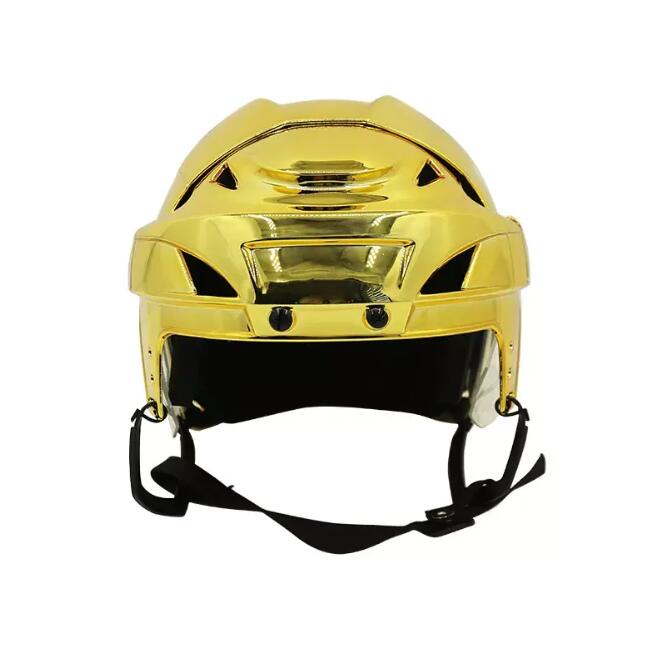Responding to Damage: Steps for Hockey Players with Electrolytic Gold Helmets
2024-03-25
Introduction:
Hockey helmets are critical safety equipment designed to protect players from head injuries during the fast-paced and physical nature of the game. The introduction of innovative technologies like electrolytic gold coatings has aimed to enhance helmet performance and reduce the risk of injuries. However, even with advanced materials, helmets can sustain damage during gameplay. In this article, we'll outline the steps a player should take if their hockey helmet with electrolytic gold sustains damage during a game to ensure continued safety and protection.
Assess the Damage:
The first step for a player whose hockey helmet sustains damage during a game is to assess the extent of the damage. Inspect the helmet thoroughly for any visible signs of cracks, dents, or deformities in the shell or protective padding. Pay close attention to areas around the face mask, ear guards, and chin strap attachments, as these are common areas prone to impact during gameplay.
Stop Playing Immediately:
If the helmet shows signs of significant damage, the player should stop playing immediately and seek medical attention if necessary. Continuing to play with a damaged helmet increases the risk of further injury, as the helmet may no longer provide adequate protection in the event of another impact or collision.
Notify Coaching Staff or Officials:
Once the player has removed themselves from the game, they should notify coaching staff or game officials about the helmet damage. This allows the coaching staff to assess the situation and make appropriate decisions regarding the player's safety and involvement in the game. Coaches may have spare helmets available for immediate replacement or may arrange for repairs or replacement after the game.
Replace or Repair the Helmet:
Depending on the severity of the damage, the player may need to replace or repair their hockey helmet with electrolytic gold coatings. Minor cosmetic damage or surface scratches may be addressed through cosmetic repairs, such as patching or repainting the affected areas. However, if the damage compromises the structural integrity of the helmet or affects its protective capabilities, replacement may be necessary.
Follow Manufacturer's Guidelines:
When replacing or repairing a damaged hockey helmet, it's essential to follow the manufacturer's guidelines and recommendations. Some manufacturers may offer warranty coverage for helmet damage under certain conditions, while others may provide instructions for proper repair procedures or replacement parts. Adhering to these guidelines ensures that the helmet maintains its intended performance and safety standards.
Continue with Proper Maintenance:
After repairing or replacing the damaged helmet, the player should continue with proper maintenance and care to ensure its longevity and effectiveness. This includes regular inspection for signs of wear or damage, proper cleaning and sanitization, and storage in a cool, dry place when not in use. Additionally, players should follow helmet fitting guidelines to ensure a snug and secure fit during gameplay.
Conclusion:
Sustaining damage to a hockey helmet with electrolytic gold coatings can be concerning for players, but taking prompt and appropriate action is essential for ensuring continued safety and protection on the ice. By assessing the damage, stopping play immediately, notifying coaching staff or officials, and following manufacturer's guidelines for replacement or repair, players can mitigate the risk of further injury and maintain the integrity of their protective equipment. Prioritizing proper maintenance and care of the helmet further ensures its effectiveness in providing protection during gameplay, allowing players to focus on their performance with confidence and peace of mind.



